How to Draw a Dog Face
Learn how to draw a dog face step by step with this easy and fun tutorial. Perfect for beginners and kids — create a cute puppy drawing with simple shapes!
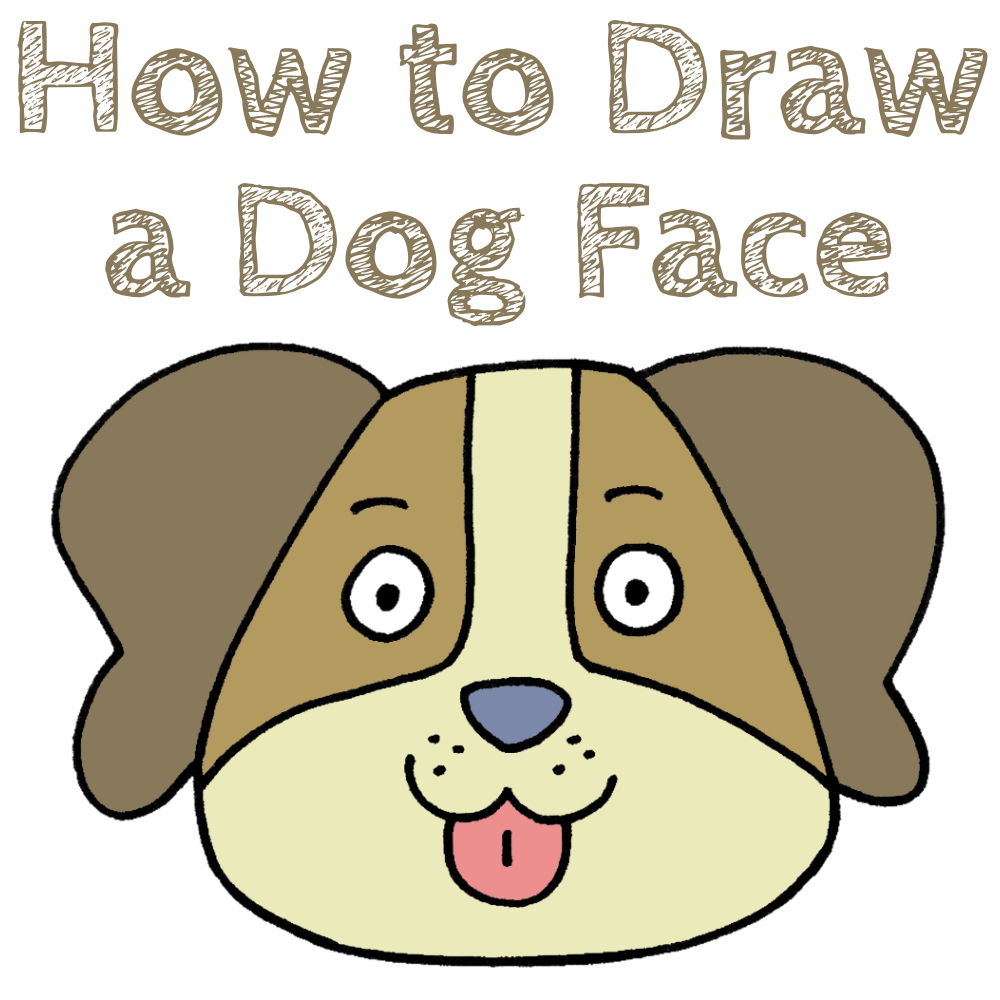
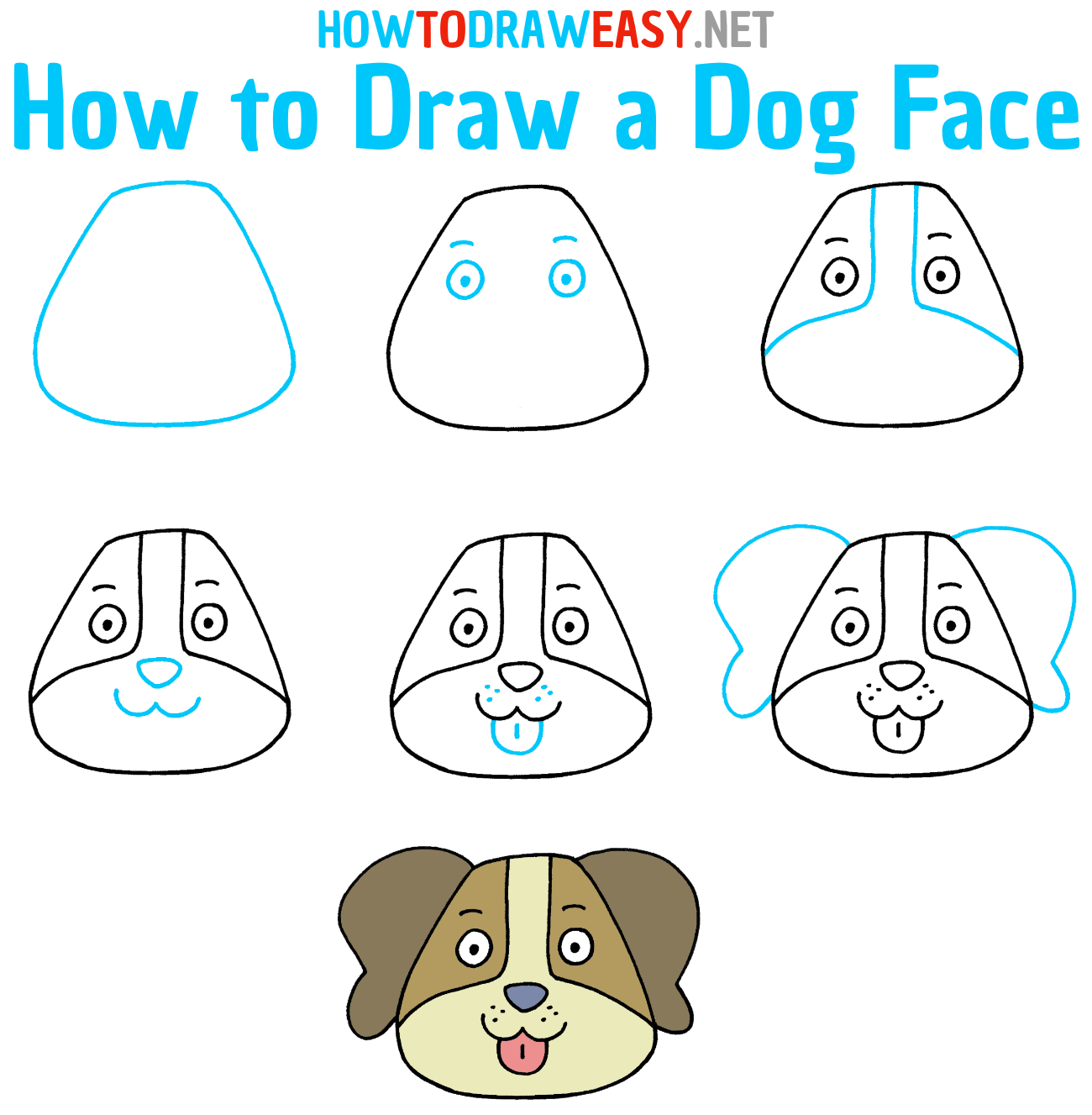
How to Draw a Dog Face Step by Step
Dogs have always been our best friends — loyal, loving, and full of energy. Capturing their cheerful expressions in a drawing is a rewarding and fun experience for any artist, no matter the skill level. In this tutorial, you’ll learn how to draw a cute dog face step by step, using simple shapes and easy techniques.
By the end of this guide, you’ll have a friendly, cartoon-style dog face that looks happy and expressive. You’ll discover how to shape the head, place the eyes and nose, add floppy ears, and finish with colors that make your drawing come alive.
Why You’ll Love Drawing a Dog Face
Drawing a dog face is more than just creating a picture — it’s about learning to show emotion and personality through lines and shapes. Dogs have one of the most expressive faces in the animal world. Their eyes can look excited, their ears can show curiosity, and their tongues can express playfulness.
As you follow this lesson, pay attention to how simple curves and soft features can bring warmth and friendliness to your art. This drawing exercise will help you:
- Practice drawing symmetrical shapes,
- Learn how to simplify real features into cute cartoon-style forms,
- Improve your ability to capture expressions in animals and characters.
Whether you’re a beginner or already experienced in drawing, this lesson will help you build confidence and sharpen your creative observation.
What Makes This Lesson Great for Beginners
One of the best things about this dog face tutorial is how approachable it is. You don’t need any advanced drawing skills — just a pencil, paper, and a few minutes of your time. Each step is broken down clearly, showing you how to move from basic outlines to a finished, colorful result.
This guide is ideal for:
- Kids who are learning to draw animals,
- Art students looking to practice proportion and character design,
- Adults who enjoy relaxing, creative hobbies,
- Teachers or parents who want fun art activities for kids.
You’ll also learn a few artistic tips — like how to use lines to create a sense of softness, or how to make your dog’s face look cute and friendly just by adjusting the eyes and mouth.
Tools and Materials You’ll Need
Before you start, gather these simple drawing supplies:
- Pencil — for sketching the initial shapes.
- Eraser — to clean up your drawing as you go.
- Black marker or pen — for outlining the final lines.
- Drawing paper — smooth or slightly textured paper works well.
- Colored pencils or markers — use brown, beige, pink, gray, and black tones for realistic or cartoon coloring.
If you want to make your drawing pop, try using colored paper or digital drawing tools! The important thing is to stay creative and enjoy the process.
Why Practice with Dog Drawings?
Dogs are an excellent subject for beginners because their shapes are simple yet expressive. They help artists learn balance, flow, and emotion in their drawings. Once you’ve mastered this dog face, you’ll find it easier to draw other animals, characters, or even your own pets.
Drawing dogs is also a great way to relax. The friendly shapes and joyful expressions bring a sense of calm and happiness — it’s the perfect creative break at any time of day.
Time needed: 15 minutes
How to Drwa a
- Draw the Head Shape
Lightly sketch a rounded, slightly triangular shape with soft corners. Think of it as a wide cone with the point at the top and the bottom gently flattened — this creates a friendly, puppy-like head. Keep your pencil strokes loose and light so you can adjust proportions later. The width should be a bit greater than the height; leave space inside for the eyes and snout.
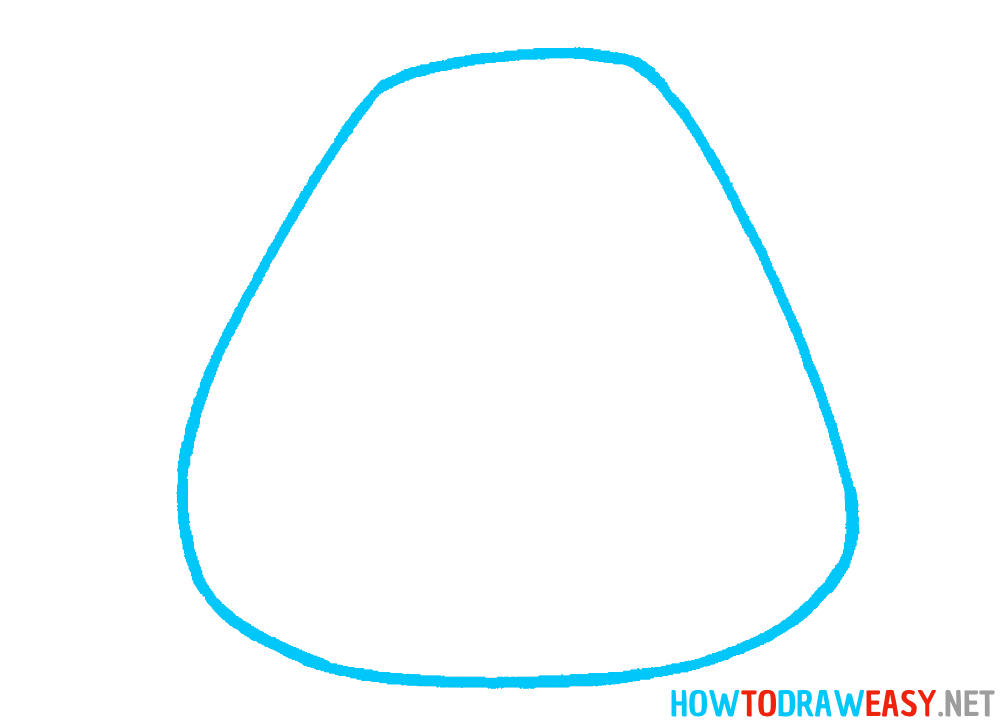
- Add the Eyes and Brows
Place two round eyes roughly one third of the way down from the top of the head shape, spaced about one eye-width apart. Draw small curved eyebrow lines above each eye to add expression. Inside each eye, leave a little white circle for a highlight — this makes the eyes look shiny and alive. Check symmetry by comparing distances to the edge of the head on both sides.
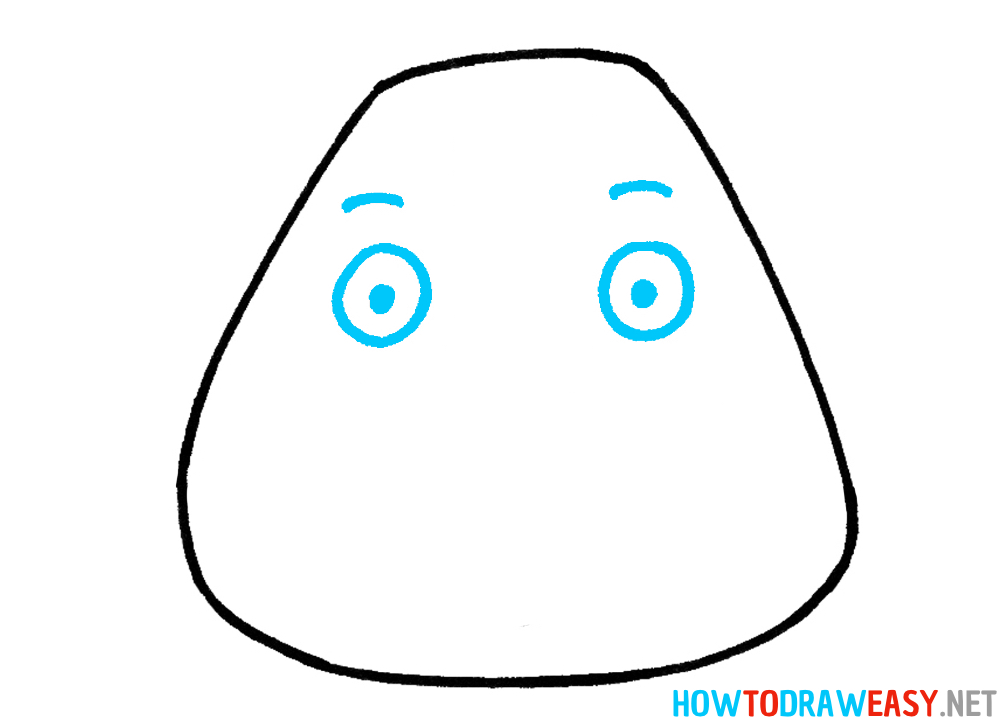
- Draw the Face Markings
Sketch the center facial stripes and the curved cheek lines that split the muzzle from the upper head. These curved lines sweep down from near the center top of the head and arc toward the sides of the lower face — they act as guides for the snout and give the dog its distinct patchy markings. Keep these lines smooth and slightly rounded to suggest soft fur rather than hard edges.
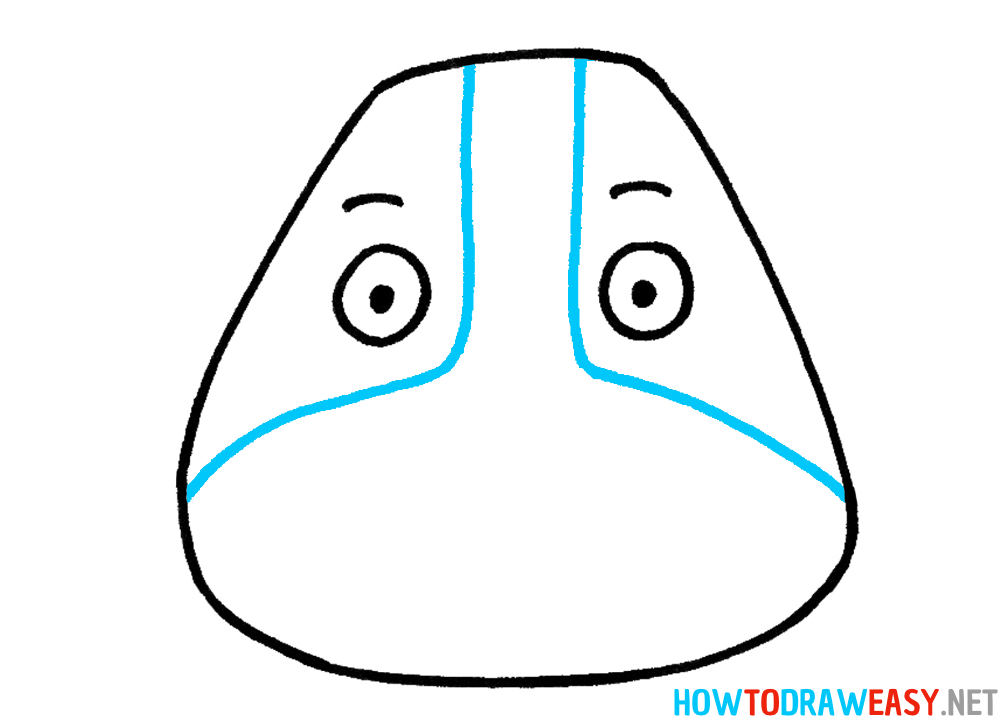
- Add the Nose and Basic Mouth Shape
In the center of the lower face, draw a small rounded triangle or oval for the nose. Directly below the nose, draw the simple smile shape — a soft “W” or two short curves that meet — to form the mouth. These elements should sit centered between the cheek lines from Step 3. Make the nose a touch darker or shaded later to give it weight.
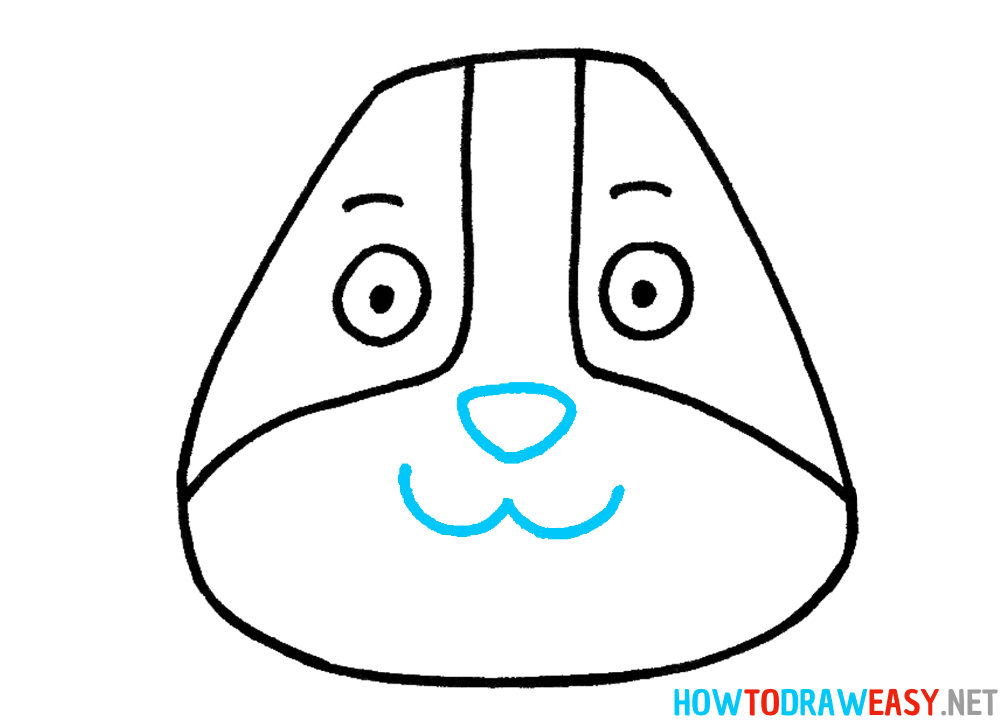
- Draw the Tongue and Whisker Spots
Add a small tongue shape peeking from the mouth: a rounded rectangle or teardrop with the top slightly tucked under the upper lip. Around the muzzle, place three tiny dots or short dashes on each side to mark whisker bases — these small details bring charm and realism to the face. If you want a playful puppy, make the tongue a bit larger and more curved.
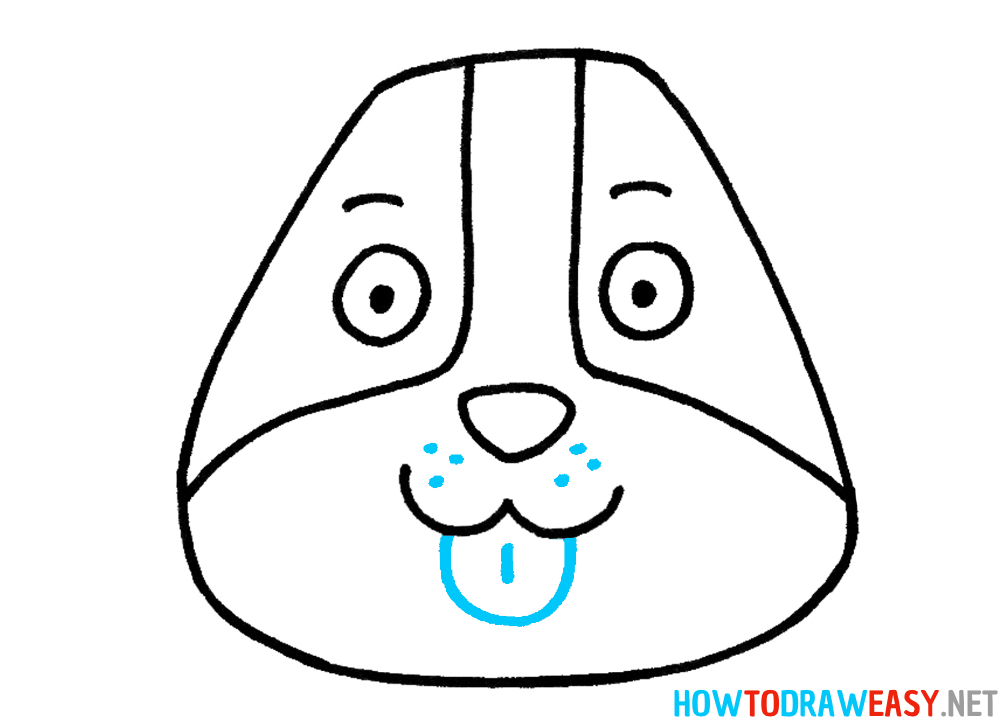
- Add the Ears
On each side of the head, draw large, floppy ear shapes starting from near the top corners of the head and curving down and out. The ears in the collage are broad and rounded — give them soft, flowing contours to show plush fur. Make the ear shapes slightly asymmetrical (one a touch lower or wider) for a relaxed, natural look. Add a simple inner-ear curve if you like.
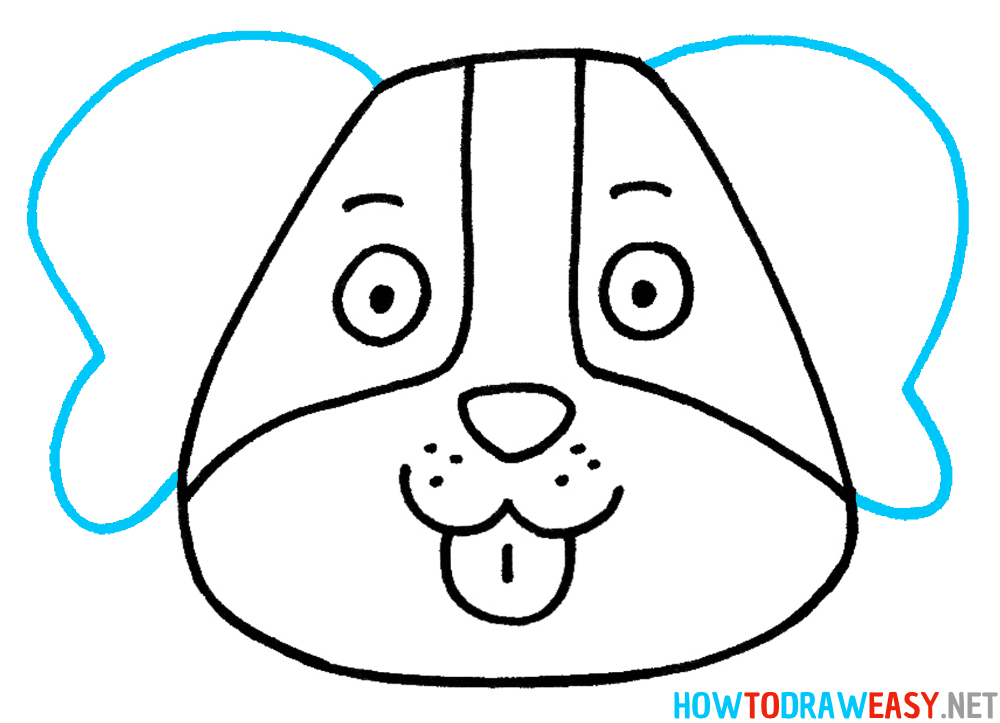
- Trace, Clean Up, and Color
When you’re happy with the sketch, go over your best lines with a darker pen or marker. Erase the light construction lines carefully once the ink is dry. Choose warm colors — light brown or tan for the fur, cream for the muzzle, pink for the tongue, and a darker brown for the ears or patches. Add subtle shading under the ears and the chin to give volume, and leave highlights in the eyes and on the nose for a lively finish.
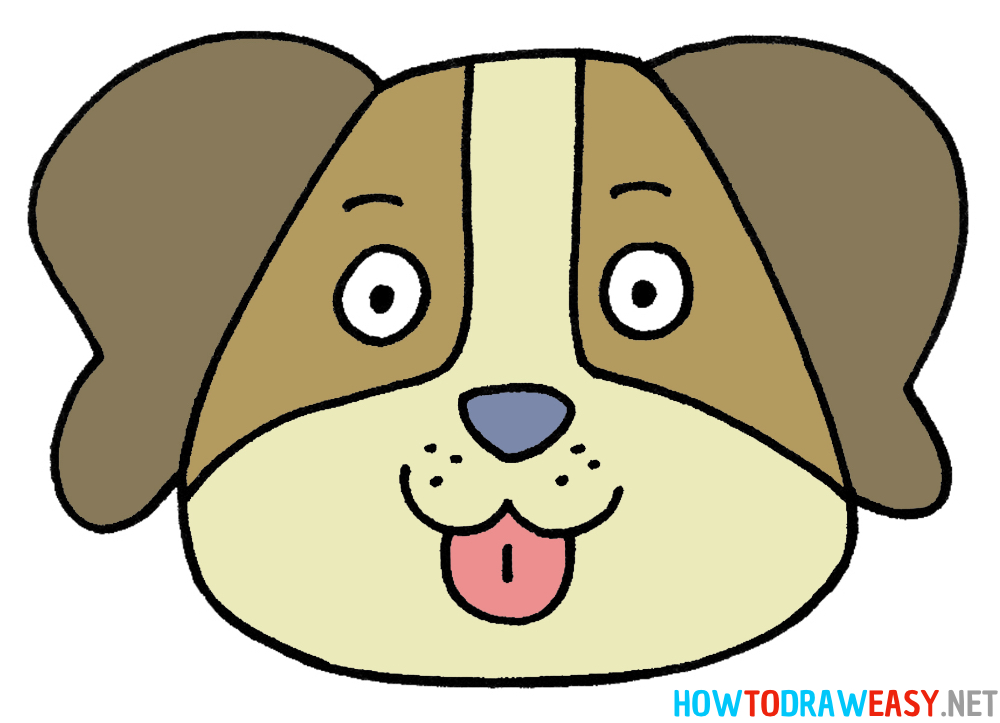
Great Work — You Drew an Adorable Dog!
Congratulations! You’ve completed your dog face drawing — and now you can proudly say you know how to draw one of the world’s most beloved animals. From the first soft lines of the head to the expressive eyes, nose, and floppy ears, you’ve brought to life a character full of warmth and friendliness.
What makes this achievement special is not just the final image, but the process itself. You’ve learned to think like an artist — observing proportions, balancing shapes, and using simple lines to create emotion. Each stroke you made built personality into your drawing, transforming a blank page into a joyful cartoon dog.
Add Color and Emotion
Now that you’ve finished the outline, take a moment to make your artwork unique. You can use colored pencils, markers, or watercolors to add depth and softness. Try blending shades of brown and cream for the fur, add a warm pink for the tongue, and use a soft gray or beige for shadow areas.
If you want to make your drawing look more expressive, experiment with:
- Eyebrow lines to show curiosity or excitement.
- Different ear positions — perked up for alertness, or lowered for a relaxed look.
- Tongue and mouth variations — a wide smile, a little pant, or even a sleepy yawn.
Small changes in your lines can completely change the dog’s personality. That’s the magic of drawing!
Practice Makes You Better
Every time you draw, you train your hand and your eye to work together. Try repeating this tutorial a few times — each version will come out a little better, a little more natural. You might start noticing how quickly your shapes become more balanced and how your lines flow with more confidence.
Once you feel comfortable with this drawing, challenge yourself by experimenting with new dog breeds — for example, draw a poodle, bulldog, or husky face using the same basic structure but different ear and snout shapes. You’ll be amazed at how versatile your new skills are.
Keep Exploring the World of Drawing
Art is all about curiosity — and every drawing teaches you something new. Now that you’ve mastered how to draw a dog face, take the next step! Explore more animal tutorials and character guides on HowToDrawEasy.net.
You’ll find lessons on how to draw cats, birds, wild animals, and even objects or vehicles. Each tutorial is simple, beginner-friendly, and full of creative possibilities.
The more you draw, the more you’ll develop your own unique style. Don’t be afraid to experiment — add your imagination, your colors, and your ideas. Every drawing you make is a small step toward becoming the artist you want to be.
